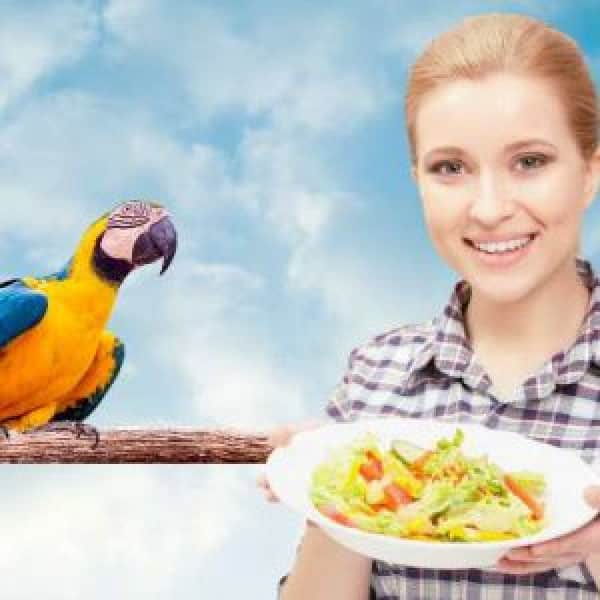
Bird Chop Vs Commercial Bird Food Blends – What’s Best for My Bird?
Last Updated on by Mitch Rezman
I talk a lot about avian digestive systems and respiratory systems but it’s been a while since we talked about feathers. Generally, the birds that we keep as pets have anywhere from 5000 to 7000 feathers. Waterfowl like certain species of ducks can have more than 11,000. Yes, scientists have actually counted them.
From Wikipedia we learn:
Feathers are among the most complex integumentary system appendages found in vertebrates and are formed in tiny follicles in the epidermis, or outer skin layer, that produces keratin proteins.
The β-keratins in feathers, beaks, and the claws, scales, and shells of reptiles — are composed of protein strands hydrogen-bonded into β-pleated sheets, which are then further twisted and crosslinked by disulfide bridges into structures even tougher than the α-keratins of mammalian hair, horns, and hoof.
β-keratin or beta-keratin is a protein in the keratin family. β-keratin is rich in stacked β pleated sheets. Keratin is one of a family of fibrous structural proteins. Keratin is the protein that protects epithelial cells from damage or stress.
It is the key structural material making up the outer layer of human skin. Keratin monomers assemble into bundles to form intermediate filaments, which are tough and form strong unmineralized epidermal appendages found in reptiles, birds, amphibians, and mammals
In birds, scales, beaks, claws and feathers also contain β-keratin of the avian family. Phylogenetic studies of β-keratin sequences show that feather β-keratins evolved from scale β-keratins. The scale β-keratins form the basal group in avians
The point is – birds eat a lot of protein to continually grow and maintain the health of their feathers and all feathers are not alike. On typical perching birds, we find the following types of feathers: Feathers with Vanes: Contour and Flight Feathers – Down – Filoplume – Semiplume – Bristle – Neossoptiles
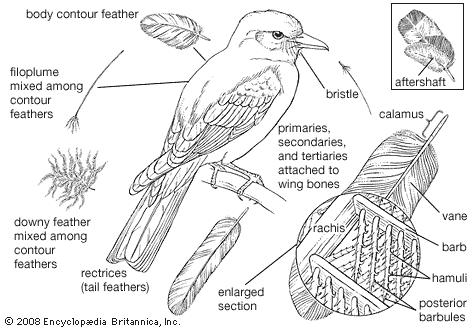
Not feeding your bird properly can lead to malnutrition especially when amino acids (components of protein and vitamins) are in short supply leadiing to a negative impact on feather growth and development.
How much protein do birds actually need? I put the question to one of the many experts that we draw on for information to help you be a better caged bird keeper. I reached out to Melanie Allen who is the Avian Product Specialist at Rolf C. Hagen.
Thanks for sending! I think you’re on to something with this article. The big thing about Chop is that it’s fed at too high of a ratio for most companion birds.
It’s an enrichment food (not a nutritional staple) and it can be a good one if incorporated at accetable levels. (plus it’s a great way to add supplements such as Prime or Clay-cal to a bird’s diet!) The traditional CHOP recipes do include grains, which provide some amino acids. But there’s too much guesswork for the right combination of amino acids on the part of the pet owner to make a good protein base for a bird!!!
Chop, much like fruits and veggies, is something that should be made in a pet bird owner’s home where the owner knows where the ingredients came from and most importantly how well were the ingredients cleaned before mixing.
I’m attaching a PDF of an old article that I didn’t have access to while traveling. This article was published in Feed Management, February 1998, Volume 49, Number 2 click here to read.
Basically it creates new rules for feeding pet birds: Note, panel consists of Mark Hagen, of course, as well as Dr. Randal Brue, Kaytee, and others. The goal of the group, if memory serves me correctly, was to set nutritional standards for companions birds for standardized guaranteed analysis (also for AFFCO standards) I don’t believe this ever went forward with AFFCO (Association of American Feed Control Officials), but don’t take my word on it.
Another important point, protein is a combination of Amino Acids and we know for a fact, that our birds require a combination of essential amino acids to make a good protein. Traditional seed diets have limitations on the required essential amino acids to make a good protein, but the Guaranteed Analysis on the package only indicates protein in the information. It is misleading. After all, hair and fingernails are made of protein (a combination of amino acids), and while hair and fingernails can be consumed (*YUCK), does it provide bio-available protein? Not really.
Traditional seed diets have limitations on the required essential amino acids to make a good protein, but the Guaranteed Analysis on the package only indicates protein in the information. It is misleading. After all, hair and fingernails are made of protein (a combination of amino acids), and while hair and fingernails can be consumed (*YUCK), does it provide bio-available protein? Not really.
Anyway, thanks for letting me see it before posting.
Have a groovy weekend!
Melanie
For this conversation, I’m not talking a about fat.
It is, by my general observation that most caged bird keeper’s clip their bird’s wings to avoid dealing with the intricacies of keeping a flighted animal in the home as it is work requiring the covering of windows, prevent access to mirrors and deleting dangerous furniture like glass tables with sharp corners. Then create landing zones…….more about that in another post.
Few if any caged bird keepers exercise their flightless birds in spite of dozens of ways. Thus caloric expenditures are minimized. On the other hand, birds will molt and basically lose every feather on their body at least once a year.
New feather growth requires protein to create beta-carotene which is the foundation of birds feathers. With limited protein, feather growth will be stunted along with the combination of erratic light cycles and counter-intuitive environments triggering hormonal and self-destructive behavior, contributing to the explosion in bird rescue populations.
We continue to impose our human based nutritional regimes on our flighted beings. We want to give our birds things like oranges because they are healthy for humans. Oranges are highly acidic and since food sits in a bird’s crop for up to six hours it means we have a lot of acid occupying a bird’s chest where a lot of plucking seems to start.
“But Mitch, vitamin C keeps us healthy and chases away the common cold”
Melbournebirdvet.com writes: Vitamin C is a metabolic regulator. In most species of seed-eating birds, including pigeons, vitamin C is synthesized in the liver and there is no advantage in supplementation unless the bird becomes debilitated and is no longer able to make enough vitamin C, especially if the liver is damaged. Vitamin D is necessary for the absorption of calcium from the bowel into the body. Birds can make their own vitamin C if they have access to light.
We’ll keep oranges out of bird’s diet now – won’t we?
When I buy a bag of commercial bird food it has labels. On this particular food I’ve chosen I instantly know the following about the food.
Hagen Tropimix Formula For Cockatiels And Lovebirds 2 lb (1.36 kg)
Guaranteed Analysis: Crude protein 14.0% (min), Crude fat 8.0% (min), Crude fibre 2.5% (max), Moisture 12.5% (max), Salt 0.01% (min), Salt 0.02% (max), Vitamin A 4,000 IU/lb (min), Vitamin D3 50 IU/lb (min), Vitamin E 10 IU/lb (min), Calcium 0.15% (min), Calcium 0.30% (max), Phosphorus 0.30% (min), Magnesium 0.10% (min), Ash 2.5% (max).
Editor’s note: if you’re wondering about the term “crude” before the word protein and other components. It’s a matter of measuring the purity of a particular compound. We are less concerned with pet foods than with human foods. Unscrupulous farmers used to sell corn bran consisting of one-third perfectly mixed sand to add to the weight of their feed recipe and could get away with it due to the lack of technical analysis tools.
What does any of this have to do with chop? We are advocates for the birds. We took them out of the sky and it is our responsibility to care for them properly. The question I’m asking: How proper is it to provide an “all chop” diet to a pet bird?
If you Google the term “bird chop recipes” the number one link on
Google’s SERP (Search Engine Result Page) is http://www.instructables.com/id/Parrot-Chop/. So complex and takes so long it requires 13 pages and a seventh inning stretch. So I thought if this was the best of the best, I’d break it down.
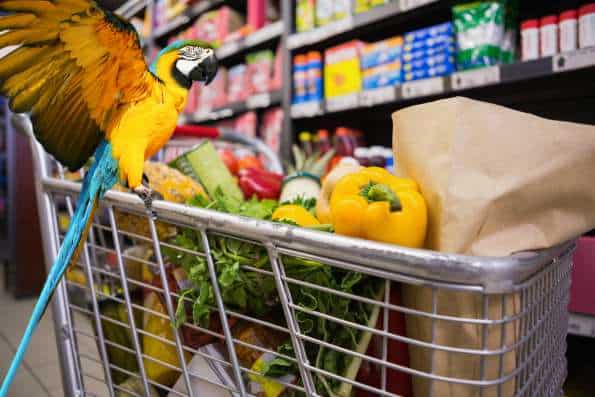
The author states: “I drew most of my inspiration for making chop from a very active bird group on Facebook in which members post their daily creations.
Because a Facebook bird group collective knowledge base will always trump 25 plus years and millions of dollars, Mark Hagen has spent on researching and producing the finest of avian diets.
You have the link and you can read the 13 pages it takes to explain the process. For this discussion I would simply like to look at the ingredients for this bird chop which are:
Fresh vegetables, fruit, grains, beans, lentils, spices, chia seeds, flax seeds, and anything that may be non-toxic to birds. <- yikes!
Thoroughly wash any produce and pick through beans and grains for stones. <-where are these coming from?
For this chop, we are using: adzuki beans, orca beans, amaranth, kamut, lentils, quinoa, brown rice couscous, black sweet rice, chia seed, flax seed, spinach, fennel, swiss chard, summer squash, snap peas, mango, pink pomelo, strawberries, banana, apricots, apple, dried coconut, pecan pieces, almond slices and rolled oats. <- I’m 65, spent 20 years in food service and had to look up some these ingredients.
Data guy that I am, I visited: http://nutritiondata.self.com/facts and placed the data it in the Google sheet below.
What we find is this chop having more ingredients than a garbage pizza in Chicago using 1-ounce servings – about the weight of a budgie has less than 2 grams of protein.
Far short of the “Crude protein 14.0% (min)” found in “Hagen Tropimix Formula For Cockatiels And Lovebirds 2 lb (1.36 kg)”.
The flip side to all this is if I sell you a commercial bird food I can look you in the eye and tell you it was made in a USDA-inspected facility, run by pet food manufacturing professionals having strict production rules.
I’m seeing homemade chops being sold online yet they have no “best if used by date” and no guarantee that they were manufactured in a sanitary facility. How much do you want to gamble with your bird’s life?
| serving size oz | sugar grams | protein grams | dietary fiber grams | % Vitamin C required daily by humans | |
| Okra beans aka Caribbean calypso beans | 3.50 | unable to find nutritional values | |||
| Beans, adzuki, mature seeds, raw | 3.50 | 0.00 | 17.00 | 17.00 | |
| Amaranth leaves, raw | 3.50 | 0.00 | 2.00 | 0.00 | |
| Kamut, cooked | 3.50 | 0.00 | 6.00 | 0.00 | |
| Lentils, cooked | 3.50 | 4.00 | 18.00 | 16.00 | |
| Quiona | 6.50 | 0.90 | 4.40 | 1.00 | |
| Brown rice couscous cooked | 3.50 | 0.00 | 4.00 | 0.00 | |
| Black sweet rice | 8.00 | 1.00 | 5.00 | 2.00 | |
| Chia seed, dried | 3.50 | 0.00 | 16.00 | 38.00 | |
| Flaxseed | 3.50 | 2.00 | 18.00 | 8.00 | |
| New Zealand spinach, raw | 3.50 | 0.00 | 1.00 | 0.00 | |
| Fennel | 3.50 | 0.00 | 16.00 | 40.00 | |
| Swiss chard | 3.50 | 1.00 | 2.00 | 2.00 | |
| Summer squash | 3.50 | 2.00 | 1.00 | 1.00 | |
| Snap peas | 3.50 | 3.00 | 3.00 | 3.00 | |
| Mango | 3.50 | 15.00 | 1.00 | 2.00 | 37.00 |
| Pummelo, raw | 3.50 | 0.00 | 1.00 | 2.00 | 193.00 |
| Strawberries | 3.50 | 0.00 | 1.00 | 5.00 | 62.00 |
| Banana | 3.50 | 12.00 | 1.00 | 2.00 | 15.00 |
| Apples, raw, with skin | 3.50 | 10.00 | 0.00 | 2.00 | 8.00 |
| Apricot, raw | 3.50 | 9.00 | 1.00 | 2.00 | 2.00 |
| Dried coconut | 3.50 | 7.00 | 7.00 | 16.00 | 2.00 |
| Pecan pieces | 3.50 | 4.00 | 9.00 | 10.00 | 2.00 |
| Almond slices | 3.50 | 4.00 | 21.00 | 12.00 | 0.00 |
| Rolled oats | 3.50 | 1.00 | 13.00 | 10.00 | 0.00 |
| 95.00 | 75.90 | 168.40 | 191.00 | 321.00 | |
| divided by 95-> | 0.80 | 1.77 | 2.01 |
Written by Mitch Rezman
Written by Melanie Allen
Approved by Catherine Tobsing
Your Zygodactyl Footnote
Author Profile
Latest entries
 The Traveling BirdJune 26, 2025Can You Name 5 Parrot Species That Are Living Wild in the USA?
The Traveling BirdJune 26, 2025Can You Name 5 Parrot Species That Are Living Wild in the USA? Bird BehaviorJune 26, 2025How is it Parrots Are Problem Solvers Social Animals and Even Use Tools?
Bird BehaviorJune 26, 2025How is it Parrots Are Problem Solvers Social Animals and Even Use Tools? Bird & Parrot AnatomyJune 25, 2025How a Tiny Chemical Modification Makes Parrots Nature’s Living Paintings
Bird & Parrot AnatomyJune 25, 2025How a Tiny Chemical Modification Makes Parrots Nature’s Living Paintings PigeonsJune 20, 2025How Do Parrots Thrive in Cities Outside Their Native Habitats?
PigeonsJune 20, 2025How Do Parrots Thrive in Cities Outside Their Native Habitats?
This Post Has 4 Comments
Leave a Reply
You must be logged in to post a comment.
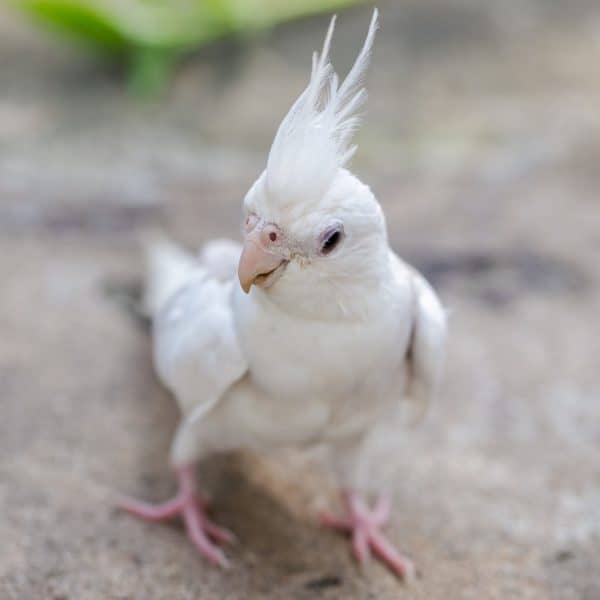
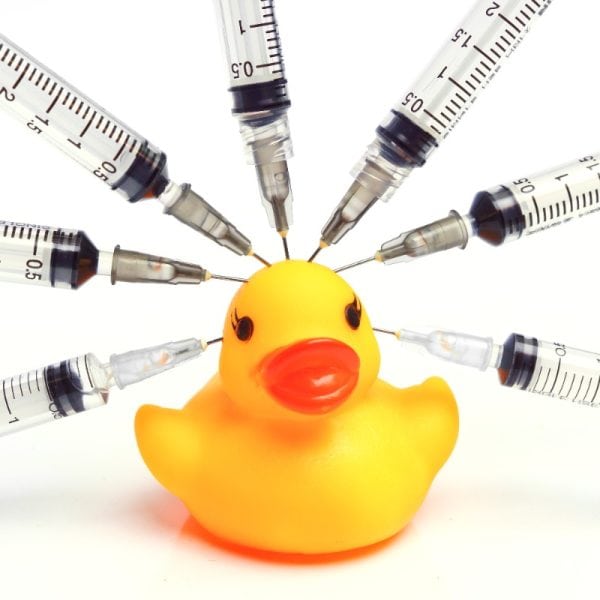
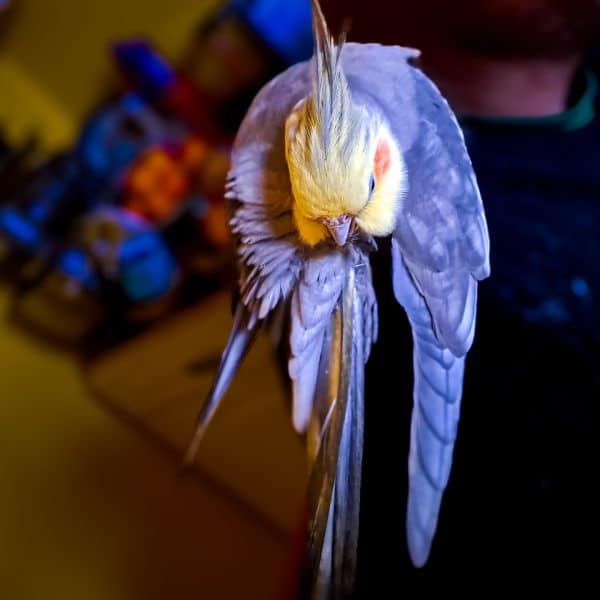
Sookiebird
5 Feb 2017I took a companion parrot class at Phoenix Landing Parrot Rescue and learned I was putting way too much chop in their bowls! Their recommendation, depending on the size of the bird, was one teaspoon up to one tablespoon of mash or chop with maybe some small pieces of acceptable fruit with it. I was surprised to learn that they should only be getting such a small amount of it. That said, they did encourage using leafy greens and larger chunks of fresh veggies and fruits for foraging activity (like on skewers) as another way to feed fresh foods. Thanks for the article—enlightening as usual!
Birds Unlimited
5 Mar 2017Your picture of an Alexandrine Parrot in your 3/5 blog is actually a picture of an Indian Rinneck. Alexandrines have a more massive beak, larger head in proportion to the body and more color to the ring.
WindyCityParrot
6 Mar 2017Your’re right BU – I didn’t catch it till after deployment